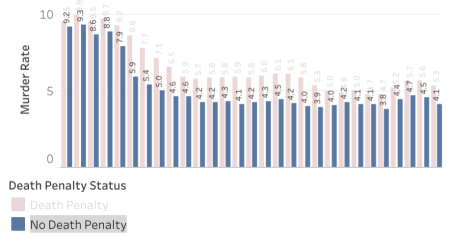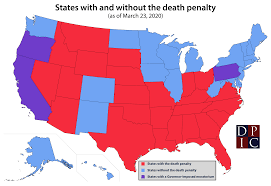Death to the Death Penalty
May 10, 2022
Supporters of the death penalty say murders and serial killers deserve to die for their crimes.
The processes of sentencing a person to death is more expensive than a life sentence. The death penalty is wrong for many reasons, but the biggest question facing the death penalty is: Does the death penalty really work as a deterrent against crime or is a life sentence a better deterrent? The answer is no, but in order to really know one has to evaluate the history of the death penalty, starting from the beginning, examining the societal effect and evaluating the level of cruelty.
The first time the death penalty was introduced was in the time before Jesus Christ which can be found in the Code of King Hammurabi of Babylon. By the 1700s, over 200 crimes were punishable by death, such as cutting down a tree, which is cruel and unusual punishment. In 1834, Pennsylvania became the first state to move executions into correctional facilities, and to only use the death penalty for first-degree murder and treason. After 1907, some states started to limit the death penalty. In the 1930s there were about 167 deaths per year. In 1966 the support for capital punishment reached an all time low. After 1968, the death penalty was practically illegal in many states, but in 1976, it was reinstated. In 1977, Oklahoma started to use lethal injection as a means of execution and after the 90s executions declined by 75%. Starting in the 2000s, the death penalty featured more limitations, and governors started to sign legislation to repeal the death penalty and replace it with life without parole.
The death penalty has many societal effects as well, such as on the criminal justice system. Those who work in the criminal justice system are governors, wardens, corrections officers, judges, prosecutors, defense attorneys, and those involved directly in executions. These people are forced by the system to participate in this process which they might find morally objectionable. It is not administered in a fair way and is disproportionately used against the poor, and people of color. It’s supposed to be a deterrent to crime and make one believe when they commit a crime they will be persecuted and that there will be consequences, meaning the crime rate should have dropped since we started using the death penalty. According to research, crime in non-death penalty states is actually LOWER than crime in states with the death penalty. In 2018 there was a murder rate of 5.3 in states with the death penalty, compared to in the states with no death penalty there is a murder rate of 4.1. This data shows how the death penalty does effect society but not in the way it’s supposed to, in fact in a negative way.

“Race of victim was found to influence the likelihood of being charged with capital murder or receiving the death penalty, i.e., those who murdered whites were found to be more likely to be sentenced to death than those who murdered blacks. This finding was remarkably consistent across data sets, states, data collection methods, and analytic techniques,” reported U.S. General Accounting Office, Death Penalty Sentencing: Research Indicates Pattern of Racial Disparities. This goes to show the level of cruelty of the death penalty and how it violates the constitutional ban against cruel and unusual punishment. The state should not be giving itself the right to kill human beings, and wasting the money of taxpayers. There are many unavoidable costs that make the death penalty way more expensive than a life sentence. Since the constitution requires a complex process for all these death penalty cases. This involves, the trail, the jury, and the probable many appeals that come with the case.
They say the death penalty is reserved for the more heinous murders and most brutal criminals. Defendants will go to a court and argue that the punishment is cruel and unusual under the eighth amendment because it’s the only provision against the death penalty people can argue. The fifth amendment clearly states no person shall be held to answer for a capital crime, unless on a presentment or indictment of a grand jury, which is always the case. The death penalty is wrong; everything that can be argued just with the fact that it is cruel and if one really wants another person to suffer for their crime, they would suffer more in prison.
The death penalty is wrong in all senses. Ethically, morally, and logically it’s wrong.
“There is a certain right by which we may deprive a man of life, but none by which we may deprive him of death; this is mere cruelty,” wrote Friedrich Nietzsche, a German philosopher cultural critic, composer, poet, philologist, and scholar of Latin and Greek whose work has exerted a profound influence on modern intellectual history.
Ultimately, as a just society, we should sentence to death the death penalty.















